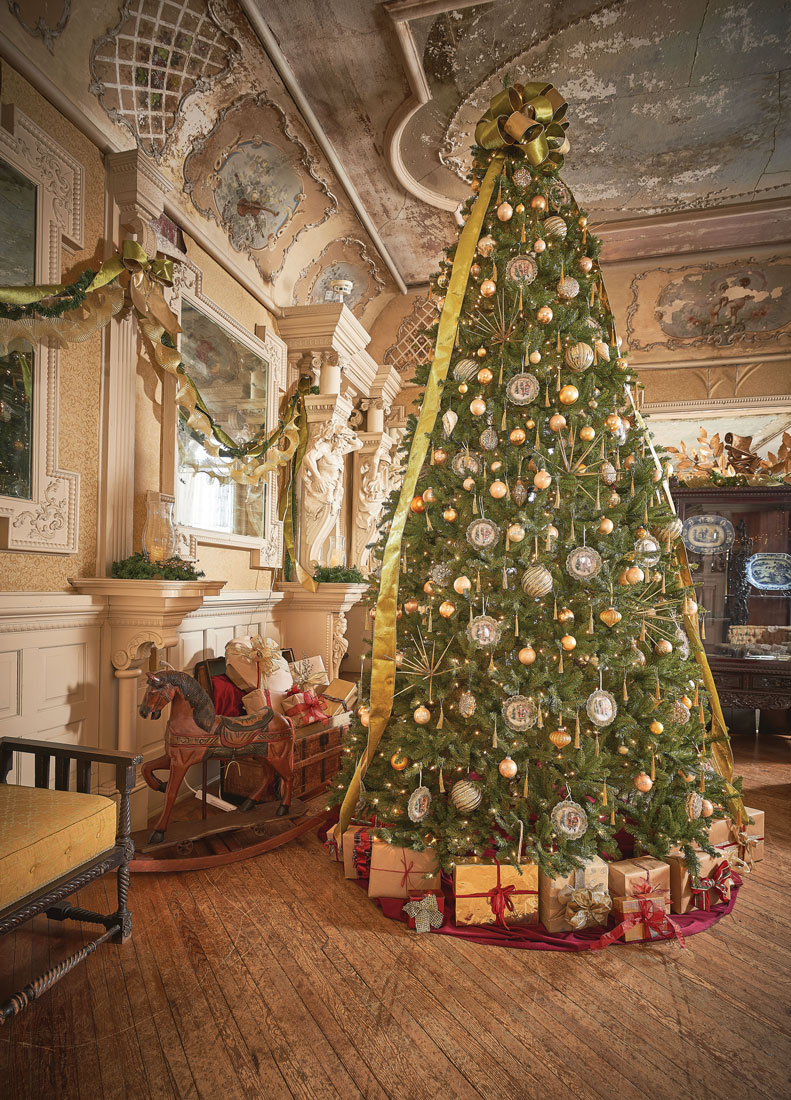Growing Christmas Cheer
By Avery Walker

As the granddaughter of a Christmas tree farmer, when it came to picking out a tree for the holidays, a fresh-cut pine was the only way to go. For as long as I can remember, every Thanksgiving we would gather as a family on my grandfather’s farm, eat a splendid meal that my grandmother would spend countless hours preparing, and when everyone was full to the seams, we would slip on our boots and hats and make the trek into the woods to find our perfect tree. Sometimes it felt like we looked at every tree in the forest before we found the perfect tree. Other times, we would find “the one” in just a few minutes and my dad would use a hand saw to cut it down while we all grabbed a branch to feel like we were helping. Nothing was better than the fresh smell of pine and sense of accomplishment when we finally got the tree home and spent far too long trying to level it in our metal tree stand.
For centuries, picking out a Christmas tree has been a special tradition for many families around the holidays. Although historians differ on exactly when and where the idea of Christmas trees originated, they have become an integral part of the holidays in the United States and around the world. Every year, over 25 million Christmas trees are harvested and sold around the world. Although North Carolina is not the only state that produces real trees, it is responsible for over 26% of Christmas tree production in the United States. Hundreds of Christmas tree farmers, carefully cultivating trees on around 40,000 acres, supply trees to all 50 states and countries across the globe every year, earning North Carolina (particularly the High Country) the title of America’s Christmas Tree Capital. Our nation’s most popular variety of Christmas tree is grown here: the North Carolina Fraser Fir. In fact, it is so popular that it has been selected as the official White House Christmas Tree more years than any other variety. This year’s White House Christmas Tree is no exception, having already been selected from a farm in Jefferson, North Carolina, making it the 14th year for the prestigious tree to be chosen from our state.
If you are worried about the environmental impact of cutting down millions of trees every year, you can set your mind at ease. For every Christmas tree cut down each holiday season two more are planted. In fact, Christmas tree farmers around the world keep enough trees growing to supply millions of people with oxygen, while absorbing carbon and other gases and positively impacting the climate. When it is time to take down your holiday decorations, real trees can be recycled and become habitats for wildlife by being placed in areas where small animals or even fish can use them for shelter. Many communities have programs that collect old Christmas trees and turn them into mulch that can be used for local beautification or gardening. Artificial trees, conversely, are made of non-renewable oil-based materials, and although they may last for several years, once in a landfill they will remain there for centuries. Most artificial trees are manufactured overseas and are often made with chemicals such as PVC which are known in the U.S. to be harmful. For some, the option of having a real Christmas tree is impossible due to allergies, but did you know that many Christmas tree allergies are actually an allergy to the dust and pollen that have settled on the branches over time? Many people who previously suffered with allergic symptoms from having a Christmas tree in their house can find relief simply by rinsing the tree with water before bringing it into the house.
This year, consider the “truly green” option when choosing your family’s Christmas tree. In doing so, you will not only support local farmers and the economy, but also the environment. Not to mention, picking out a Christmas tree together is a memory that is sure to live on for many years to come in the hearts of your loved ones.

